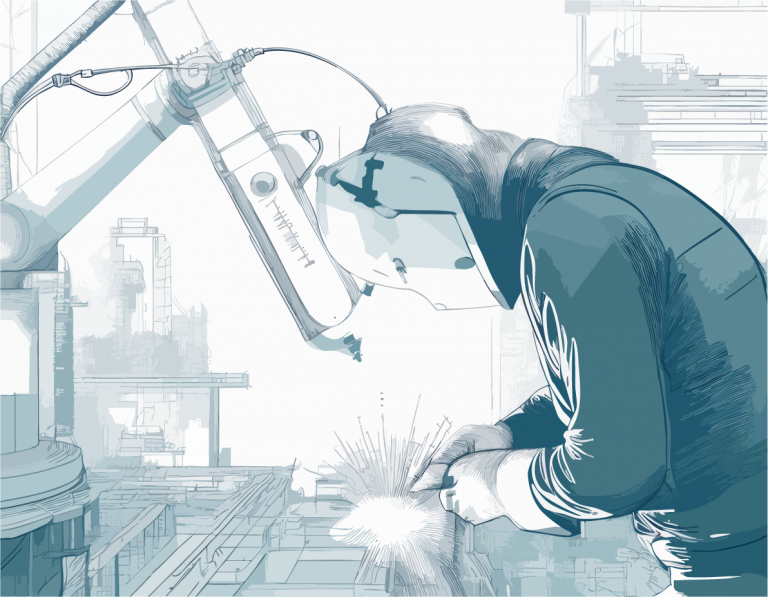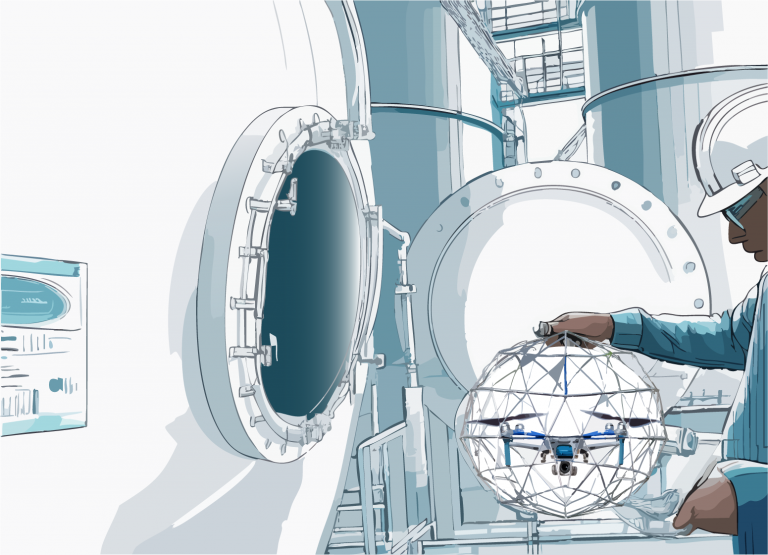The industrial robotics landscape is experiencing a profound transformation that extends far beyond traditional manufacturing applications. According to the International Federation of Robotics (IFR), 2021 recorded the highest number of new industrial robot installations in history, with a remarkable 31% year-over-year increase. This surge reflects a fundamental shift: industrial robotics implementation is no longer confined to high-volume manufacturing but has become essential across diverse sectors—from e-commerce fulfillment centers to pharmaceutical packaging lines.
For asset owners, service companies, and technology providers, understanding the key trends and strategic approaches driving successful implementation is essential for capitalizing on this transformative opportunity.
Five Critical Trends Reshaping Industrial Robotics Transformation
AI-Driven Industrial Automation
Today’s leading robotics solutions incorporate sophisticated machine learning algorithms and computer vision systems that enable dynamic adaptability rather than simple programmed movements. According to Deloitte, AI-driven quality inspection systems can reduce scrap rates by up to 50% in precision manufacturing environments while increasing throughput by 25-35%. For asset owners, this means automation is now viable for processes previously considered too variable or complex.
The Rise of Robotics-as-a-Service (RaaS)
Rather than requiring substantial upfront capital expenditure, RaaS subscription-based approaches convert robotics into operational expenses, dramatically lowering implementation barriers. BCG analysis demonstrates that RaaS models allow organizations to experiment with automation solutions without committing to expensive, rigid infrastructure investments. These providers typically assume responsibility for ongoing maintenance and optimization, addressing key concerns for organizations with limited internal robotics expertise.
Edge Computing and Connectivity Advancements
With 5G networks and industrial IoT solutions, robots now communicate with each other and backend systems in real-time, enabling unprecedented coordination. Edge computing reduces latency to milliseconds—critical for applications where timing precision directly impacts quality and safety. These connected systems generate comprehensive data sets that feed into predictive maintenance programs, reducing downtime by 30-45% according to Aberdeen Group research.
Human-Centered Design and Compliance
As robots increasingly share workspaces with human operators, implementation success depends heavily on thoughtful user experience design and rigorous safety compliance. According to a 2024 EY report, nearly 70% of manufacturing executives now highlight compliance and ease-of-use as top criteria when evaluating robotics solutions—ranking these factors above raw performance metrics.
Balancing Global Scale with Local Requirements
Organizations implementing robotics across multiple regions must navigate diverse regulatory environments—from EU machine directives to China’s GB standards and U.S. OSHA regulations. KPMG research indicates that companies achieving the highest implementation success rates invest in building multilingual support centers, training local technicians, and establishing parts depots closer to end-users.
Strategic Approaches for Successful Implementation
Industry-Specific Specialization
Organizations achieving the greatest implementation success are focusing on industry-specific specialization rather than generic automation solutions. According to Frost & Sullivan, robotics implementations tailored to specific industry requirements achieve ROI 40-60% faster than generic solutions, primarily due to reduced integration complexity and higher utilization rates.
Ecosystem Partnerships
Successful implementation increasingly depends on ecosystem partnerships that address the full spectrum of deployment requirements. Collaborations between robotics manufacturers, systems integrators, and software companies create comprehensive solutions that simplify the customer journey. These partnerships can reduce implementation timelines by 30-50% while substantially decreasing project risk.
Innovative Financing and Deployment
Forward-thinking organizations are addressing financial constraints through innovative approaches that lower entry barriers. Options now include proofs-of-concept, short-term rentals, leasing agreements, and success-based billing approaches. IDC’s research shows organizations utilizing these flexible models report 35% higher satisfaction with their automation initiatives.
Robust Support Infrastructure
The long-term success of robotics implementation depends heavily on after-sales support infrastructure. Organizations with dedicated local support centers report 30% faster issue resolution times, directly impacting productivity and implementation satisfaction. This support is particularly critical during the initial 6-12 months of deployment when operational teams are still developing familiarity with new systems.
Data-Driven Continuous Improvement
The most sophisticated implementations leverage operational data to drive continuous improvement. By gathering and analyzing performance data from deployed robots, organizations can guide product refinements and optimize maintenance schedules. Companies that engage customers in collaborative development processes achieve 40-60% higher satisfaction scores and significantly higher implementation success rates.
Implementation Roadmap for Different Stakeholders
For Asset Owners
Begin with comprehensive process analysis to identify high-value automation opportunities. Develop clear success metrics tied to specific business outcomes and evaluate solutions based on total implementation requirements, not just technical specifications. Start with limited-scope pilot implementations to validate performance, and invest heavily in workforce training throughout the process.
For Service Companies
Develop hybrid offerings that combine robotics capabilities with specialized human expertise. Invest in advanced data analytics, specialized integration expertise, and industry-specific process knowledge to create service offerings that enhance the value of robotics implementations rather than competing with them directly.
For Technology Providers
Balance standardization with flexibility through modular architectures. Develop comprehensive value propositions addressing technical, financial, and operational concerns, and build robust partner ecosystems that provide localized implementation support. Invest in user experience design to simplify implementation and establish data collection systems to drive continuous product improvement.
The Future of Industrial Robotics Transformation
As we look toward the remainder of this decade, industrial robotics implementation will continue evolving in response to technological advancements and changing market requirements. The convergence of artificial intelligence, edge computing, and advanced sensing technologies will enable increasingly autonomous operation, expanding the range of viable applications while reducing implementation complexity.
The organizations that achieve the greatest value from industrial robotics will be those that effectively integrate automation capabilities within comprehensive digital transformation initiatives—connecting robotics systems with enterprise data platforms, advanced analytics capabilities, and broader operational technology ecosystems.





